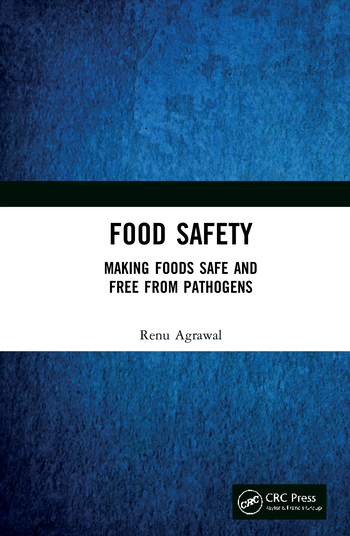Mitigation of Listeria monocytogenes in Ready-to-Eat Meats Using Lactic Acid Bacteria

Nothing like a series of disease outbreaks and food recalls to put a pathogen at the forefront of the media and make processors fear the worst. Listeria monocytogenes has given us a lot to talk and think about over the last 5 years. Outbreaks of listeriosis associated with the consumption of contaminated caramel apples, ice cream and cantaloupes, as well as several multi-state recalls of bagged salads, frozen vegetables, school lunches, frankfurters, corn dogs and ready-to-eat (RTE) meals, among others, remind us of how far we are from having a full understanding of the ecology, transmission and control of L. monocytogenes in foods and food processing environments.
A Well-Founded Scare
We all know that L. monocytogenes can be a challenging pathogen to control. First, it is a common bacterium in natural environments, including vegetation, agricultural soils and livestock, so it may be brought into the plant in raw animal and plant materials, dust, water and even through plant employees. Secondly, it typically finds its niche in cold, humid environments, making it a potential nightmare to control in RTE meat processing facilities once it has established itself on the premises. Its ability to form biofilms and persist in this protective microbial community is one of the most common reasons for its difficult eradication, despite aggressive cleaning and sanitizing. Lastly, L. monocytogenes can survive and even grow in refrigerated, packaged RTE products, including those packed under low-oxygen conditions.
Unlike produce handling and processing facilities, where Listeria spp. is somewhat expected to be present from time to time, companies that process RTE meats cannot afford to have L. monocytogenes. Postlethality-treated product that comes in touch with contaminated direct-contact surfaces or product that is directly contaminated after a lethality treatment becomes adulterated as per the U.S. Department of Agriculture-Food Safety and Inspection Service’s “zero tolerance” rule under 9 C.F.R. Part 430—“Control of Listeria monocytogenes in post-lethality exposed ready-to-eat products.” The rule requires that manufacturers of medium- and high-risk RTE meat and poultry products develop written programs to control L. monocytogenes, followed by robust testing as a means of verification, and encourages plants to use new technologies and methods to eliminate or reduce the growth of L. monocytogenes, hence minimizing the risk of postlethality product contamination.
On average, an estimated 1,600 people are sickened by foodborne L. monocytogenes every year in the U.S., but this translates into nearly 19 percent of annual foodborne-related deaths. Furthermore, Listeria imposes an estimated $2.8 billion in economic burden in a typical year. Almost all of this, $2.1 billion, is due to deaths.[1] RTE meat and poultry products continue to be highly implicated in the transmission of foodborne listeriosis. The L. monocytogenes/deli meats pathogen/food combination is estimated to take the lives of 89 people in the U.S. every year and to cost $902 million per year in illness cases, ranking third in terms of economic burden of illness, surpassed only by Campylobacter in poultry and Toxoplasma gondii in pork.[2]
Control of L. monocytogenes in RTE Meats
As food safety scientists, we have come to a consensus that no single antimicrobial intervention will ever be perfect in eliminating the risk for a given pathogen, that is, risk cannot be zero given our current technological and knowledge limitations. The control of L. monocytogenes in RTE meat products, especially high-risk ones such as hot dogs and deli meats, relies on the use of intensive environmental sanitation programs, thermal processing, such as cooking or in-package pasteurization, and the incorporation of antimicrobial agents as part of the ingredient formulation (e.g., nitrites, acetates, citrates, diacetates, lactates and proprionates) and sometimes as surface sprays (e.g., lauric arginate and essential oils). Irradiation of RTE products has been explored extensively, and the U.S. Food and Drug Administration has deemed this technology safe for use in meat and poultry; however, it is not widely used mostly due to consumer distrust of irradiated foods. High hydrostatic pressure has also been evaluated for the control of L. monocytogenes in RTE meats with promising safety results but still compromised quality parameters. Are there any other options that we may want to explore as an industry? What about biocontrol?
Biocontrol, or biopreservation, refers to the use of natural or controlled microorganisms, or their antimicrobial products, to extend the shelf life or enhance the microbiological safety of foods. Outside the food realm, biocontrol has seen multiple applications using predatory microbes and insects for the control of undesirable organisms, particularly in agricultural fields and urban environments. In foods, biocontrol is typically done by two groups of biological agents: bacteriophages, or viruses that specifically infect bacteria, and lactic acid bacteria (LAB). This heterogeneous group of bacteria may exert their antilisterial effect by means of two processes:
Competitive inhibition: When LAB products such as bacteriocins and other antimicrobial peptides, as well as organic acids from carbohydrate fermentation, create an inhospitable environment for Listeria to thrive, hence reducing its numbers.
Competitive exclusion: When LAB occupy space that Listeria may use for attachment or colonization, leaving the pathogen without a physical site to anchor and multiply.
Despite some research exploiting competitive inhibition and exclusion for the control of L. monocytogenes in RTE meats, there is a lack of published information on this topic. In the following paragraphs, we summarize two representative studies that exploited the competitive inhibition activity of LAB against L. monocytogenes. This is neither a comprehensive nor detailed list, but provides a good overview of recent work.
Amézquita and Brashears[3] screened a series of naturally occurring LAB in RTE meats for antilisterial effects. Three particular microorganisms—Pediococcus acidilactici, Lactobacillus casei and Lactobacillus paracasei—were added to frankfurters and cooked ham co-inoculated with L. monocytogenes, vacuum-packaged and stored at 5 °C for 28 days. Bacteriostatic activity (cells growing slower) was observed in cooked ham, whereas bactericidal (cells dying) activity was observed in frankfurters. Numbers of L. monocytogenes were 4.2 to 4.7 logs and 2.6 logs lower than controls in frankfurters and cooked ham, respectively, after the 28-day refrigerated storage. In all cases, numbers of total LAB increased by only 1 log cycle. The authors indicated that P. acidilactici was possibly a bacteriocin producer, whereas the antilisterial activity of the two other strains was due to the production of organic acids. Further studies over a 56-day period indicated that there was no impact on the quality of the product. The authors concluded that this method represents a potential antilisterial intervention in RTE meats, because it inhibited the growth of the pathogen at refrigeration temperatures without causing sensory changes.
Koo et al.[4] found that the combination of three LAB strains contained in Lactiguard®—Lactobacillus animalis, Lactobacillus amylovorus and P. acidilactici—was inhibitory to L. monocytogenes inoculated onto frankfurters not containing lactate/diacetate after 8 weeks of refrigerated storage (0.6-log reduction), and when a cell-free extract (CFE) of LAB was added with LAB, even higher inhibition was obtained (1.2-log reduction). In frankfurters containing lactate/diacetate, both the LAB and the LAB plus CFE were more effective in reducing L. monocytogenes after 8 weeks of refrigerated storage (2- and 3.3-log reductions, respectively). This study showed that it is possible to use LAB as an aid to further reduce L. monocytogenes throughout storage.
Now we see that there are applications of LAB to control L. monocytogenes in the product itself, but these have not been used extensively by industry despite their technological potential. A highly related application, the control of environmental L. monocytogenes by LAB, may see greater potential in the near future due to some promising results. We present two examples representative of this area of research.
Ndahetuye et al.[5] evaluated the attachment of three LAB strains—P. acidilactici, L. amylovorus and L. animalis—to stainless steel coupons from a deli slicer and their ability to inhibit the attachment of L. monocytogenes. L. animalis exhibited the greatest hydrophobicity (26.3%), and its adherence increased sharply from 24 to 72 hours, whereas L. amylovorus yielded the lowest hydrophobicity (3.86%) and was weakly adherent. Although P. acidilactici had moderate hydrophobicity (10.1%), it adhered strongly. Three conditions were simulated to evaluate the ability of the LAB cocktail [108 colony-forming units (CFU)/mL] to competitively exclude L. monocytogenes (103 CFU/mL) on the surface of the coupons. The coupons were pretreated with the LAB cocktail for 24 hours prior to the addition of L. monocytogenes, simultaneously treated with the LAB cocktail and L. monocytogenes, or pretreated with L. monocytogenes 24 hours before the addition of the LAB cocktail. The LAB cocktail was able to reduce the attachment of L. monocytogenes significantly, indicating a possible role for LAB as a biosanitizer in the food industry.
Zhao et al.[6] determined that treating Listeria-laden biofilms with the two competitive exclusion isolates—Lactococcus lactis subsp. lactis strain C-1-92 and Enterococcus durans strain 152—individually at either 4 or 8 °C for 3 weeks substantially reduced or eliminated listeriae in the biofilms. Treatment with L. lactis subsp. lactis strain C-1-92 and E. durans strain 152 at 4 °C for 3 weeks reduced the population of L. monocytogenes in a biofilm from 7.1- to 7.7-log CFU/cm2 to 3.0- to 4.5-log CFU/cm2 and to 3.1- to 5.2-log CFU/cm2, respectively, and treatment at 8 °C for 3 weeks reduced L. monocytogenes from 7.5- to 8.3-log CFU/cm2 to 2.4- to 3.5-log CFU/cm2 and to 3.8- to 5.2-log CFU/cm2, respectively, depending on the coupon material. The researchers combined the isolates and evaluated the control of Listeria in floor drains of an RTE poultry processing plant. The results showed that treating the drains with the isolates four times in the first week eliminated detectable Listeria from five of six drains tested, and the drains remained free of detectable Listeria for 13 weeks following the first four treatments. The authors indicated that certain bacteria, including LAB, can effectively reduce Listeria contamination in biofilms and floor drains of a plant producing RTE poultry products.
Studies performed in our food safety laboratories have further demonstrated that LAB have the ability and potential to reduce L. monocytogenes in RTE meat processing environments. We evaluated the quantitative reduction of L. monocytogenes on deli slicer stainless steel surfaces mimicking retail settings. A cocktail of L. monocytogenes at 103 CFU/mL was inoculated onto deli slicer surfaces, blades and surrounding tables. Ten milliliters of an uncharacterized LAB cocktail were sprayed after L. monocytogenes was allowed to attach to the surfaces. Reductions of approximately 0.9-log CFU/100 cm2 were estimated 1 hour after treatment of the tables, whereas no Listeria was detected by culture methods on the blades.
Conclusions and Perspectives
The use of LAB for the mitigation and control of L. monocytogenes in RTE meats and processing environments has been studied to a very limited extent. Based on current data, it is possible to infer that LAB have the ability to reduce L. monocytogenes either as an ingredient in product formulation or as part of a biosanitizing program. Certainly, this seems to be a promising alternative to physical and chemical approaches for the control of this stubborn and resilient pathogen. However, it is now the role of researchers to continue to explore this option with all its limitations and concerns, particularly the potential effects on product quality, and it is the role of industry to implement novel solutions to the recurrent problem of L. monocytogenes in RTE meats and processing environments.
Byron D. Chaves, Ph.D., is a postdoctoral research associate in the Department of Animal and Food Science at Texas Tech University.
Mindy M. Brashears, Ph.D., is a professor of food safety microbiology and director of the International Center for Food Industry Excellence at Texas Tech University.
References
1. www.ers.usda.gov/media/1837791/eib140.pdf.
2. Batz, MB et al. 2012. “Ranking the Disease Burden of 14 Pathogens in Food Sources in the United States Using Attribution Data from Outbreak Investigations and Expert Elicitation.” J Food Prot 75:1278–1291.
3. Amézquita, A and MM Brashears. 2002. “Competitive Inhibition of Listeria monocytogenes in Ready-to-Eat Meat Products by Lactic Acid Bacteria.” J Food Prot 65:316–325.
4. Koo, O-K et al. 2012. “Antimicrobial Activity of Lactic Acid Bacteria against Listeria monocytogenes on Frankfurters Formulated with and without Lactate/Diacetate.” Meat Sci 92:532–537.
5. Ndahetuye, JB et al. 2012. “Role of Lactic Acid Bacteria as a Biosanitizer to Prevent Attachment of Listeria monocytogenes F6900 on Deli Slicer Contact Surfaces.” J Food Prot 75:1429–1436.
6. Zhao, T et al. 2013. “Reduction by Competitive Bacteria of Listeria monocytogenes in Biofilms and Listeria Bacteria in Floor Drains in a Ready-to-Eat Poultry Processing Plant.” J Food Prot 76:61–67.
Looking for a reprint of this article?
From high-res PDFs to custom plaques, order your copy today!








